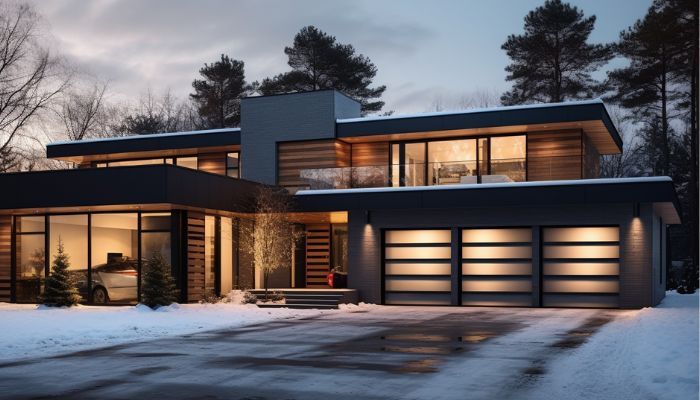
Cold Weather Culprits: Common Winter Garage Door Opener Problems
The cold weather in winter can have an impact on the functioning of garage door openers, leading to malfunctions and lingering issues. This article will present ways to troubleshoot winter-related garage door malfunctions, protect your garage door opener from freezing temperatures, and provide quick fixes for common cold weather garage door issues.
The Impact of Cold on Garage Door Opener Mechanisms
Cold temperatures can have an impact on the efficiency of garage door openers. In general, cold weather can case garage door parts to contract, making them stiffer and sometimes causing them to not work as effectively. Freezing temperatures can affect the lubrication that makes the internal mechanisms of a garage door opener work properly. This can cause the door to be harder to open and close, as well as potentially damaging the door opener’s internal components.
In addition, it is not unusual for the metal components of a garage door opener to freeze together in cold weather. This makes it difficult for the door to open or close as it should, and can cause a frustrating experience for homeowners. Even if the door opener of the homeowner is well maintained, a decrease in temperatures can still cause the components of the garage door to freeze up.
Similarly, the electronics of the door opener can be affected by low temperatures. Cold weather can cause the wires and other device components to shrink, meaning that their delicate connections could be damaged if the garage door opener is not kept warm. This is especially true of wireless door openers, which require a greater level of maintenance in order to keep them functioning properly.
Consequently, it is important for homeowners to take special care of their garage door openers as the temperature drops. If a homeowner regularly lubricates, inspects and cares for their garage door opener, they may be able to avoid any serious damages or malfunctions caused by cold temperatures. Moreover, adding insulation and weather stripping can further protect the garage door opener from the cold, and minimize the amount of damage that could be caused by the cold weather.
Troubleshooting Winter-Related Garage Door Malfunctions
When temperatures drop and snow begins to fall, the mechanism in a garage door may malfunction, making it difficult to open and close. However, common garage door problems caused by the winter can often be fixed without having to call for a professional service. Before calling a technician, here are some basic troubleshooting tips to consider for an easy solution.
To start, check the power source and circuit breaker to make sure the power is on. If the circuit breaker has been tripped that can be reset. If it continues to trip, it’s best not to reset the breaker, and to instead call a professional. Moreover, if the power is on and the door is not working, check for any snow accumulation or other obstructions blocking the tracks or weatherstripping. Remove any blockages or ice and also check to ensure the lock bar connected to the manual override is in the proper position.
On the other hand, if the door does open and close but is noisy, it’s a sign of worn parts. In addition, check the hinges, tracks, chain, and fasteners during inspection for loose parts or need of lubrication, which could be quietly resolved. Similarly, if the door is lifted by hand when it should stay shut and vice versa, it could mean the springs need to be adjusted or replaced.
For instance, broken or worn-out extension springs with slack can cause the door to open too far, or not far enough, while tension springs set too high can cause it to close too quickly. Therefore, there are simple solutions for both of these issues, and adjusting or replacing springs is a relatively easy process. Furthermore, using a garage door lubricant before the winter begins can help prevent rust and other problems in the springs and other parts.
As a result, conditions like cold and snow can cause normal functions of a garage door to malfunction. Consequently, by following these small troubleshooting tips and maintaining proper garage door maintenance, it can help reduce the chances of an unexpeced malfunction for the winter.
Protecting Your Garage Door Opener from Freezing Temperatures
The garage is an integral component of many homes and providing longevity to it requires protection from extreme temperatures. Fortunately, for residents in cold climates, there are ways to protect your garage door opener from freezing temperatures. Firstly, insulation is of upmost importance. Heat tape can be added to any exposed cables to mitigate any potential heat loss, thus safeguarding them against the cold. Additionally, it might be a good idea to store the battery backup system inside a heated area as during the coldest periods of the year, temperatures can quickly drop to sub-zero levels, making it difficult for the garage door opener to function.
Investing in a quality weather seal is highly recommended as this will prevent wind, snow, and other forms of precipitation from entering the garage. If the weather seal is already installed, it should be inspected from time to time to make sure it is in good condition. Moreover, it is essential to maintain the garage door opener properly, by lubricating the various parts from time to time. This will help reduce any stress that is placed on the opener by the extreme temperatures, thus preventing any future malfunctions.
As a result, it is safe to say that protecting the garage door opener from extreme temperatures is critical for its long-term performance. Doing so requires adequate insulation, a quality weather seal, proper maintenance, and if necessary, storing the battery backup system in a heated environment. Similarly, in the case of unplanned outages, having plan B in place – such as having a manual backup system – will help keep your garage door opener in top condition.
Quick Fixes for Common Cold-Weather Garage Door Issues
Garage doors are known for having issues in cold weather due to the sudden drop in temperature when moving from the inside of the house to the outside. Because of this, it is important to know how to handle any cold-weather related issues it may have. While some garage door issues may require professional service, there are a few quick fixes that can be done in the meantime.
In contrast, one easy fix is to check the door’s hinges. If they are loose or cracked, they should be replaced as soon as possible, as this could potentially damage the garage door more in the long run if not addressed. It is important to note that when checking the hinges, the door should be lifted slightly off the ground to ensure that the hinges are properly adjusted.
Similarly, the weatherstripping on the garage door should be examined. This is the part of the door that prevents cold air from coming in. If the weatherstripping is torn or missing, it should be replaced as soon as possible through either a hardware store or a professional. Furthermore, this weatherstripping typically needs to be replaced on an annual basis in order to ensure that the door is adequately sealed.
On the other hand, the door’s springs should also be checked. This is because they are made of metal and tend to weaken in cold temperatures, potentially leading to the door breaking down altogether if the issue is not addressed. If the door seems to be struggling to lift or close, it could be due to the springs and should be looked at by a professional to repair or potentially replace them.
Finally, the door’s overall lubrication should be checked. In order for the door to run smoothly, doors should be lubricated every few months – more often when in cold climates. However, it is important to note that certain components of the door should not be lubricated as this could cause more damage than good.
The ability to quickly recognize and address issues associated with cold weather garage door problems is essential in order to prevent any further damage. Taking the time to look for and remedy any cold weather related issues also enhances the lifetime of the door.
Key Takeaways
It is evident that cold temperatures can have a significant impact on garage door mechanisms, with the extreme cold often resulting in malfunctions and unexpected issues. Fortunately, with a few simple troubleshooting steps, many winter-related garage door issues can be resolved quickly and easily. To protect garage door openers from freezing temperatures, a few preventative measures can be taken, such as insulating the openers and cleaning the door’s tracks of ice and debris. For quick fixes, it is suggested to lubricate the garage door openers, use door sealants, and if needed, replace the worn parts. By following the tips mentioned above, one can expect to minimize the possible issues that can be caused by extreme cold temperatures.
Frequently Asked Questions
Why does my garage door opener malfunction in cold weather?
Cold weather can cause the lubricant inside the garage door opener to thicken and become less effective. Cold temperatures can also make the plastic and metal components brittle and cause the opener to malfunction. Additionally, cold weather can also affect the battery life in the opener, causing it to not have enough power to open the door. To prevent these issues, you should make sure to adequately lubricate and maintain the opener regularly, and if possible, insulate it from the cold weather.
What are common signs of winter-related garage door opener issues?
Common signs of winter-related garage door opener issues include:
-Not opening or closing properly
-Sluggish door movement
-The opener works but the door won’t open (frozen tracks)
-Strange noises when the door opens or closes
-The garage door opener light not working
-An electrical shock when touching the opener
How can I prevent my garage door opener from freezing?
One way to prevent your garage door opener from freezing is to make sure it is well-insulated and sealed. Adding weather stripping around the door and applying insulation to the interior walls can help protect it from cold temperatures. You should also ensure that the door opens and closes properly, as sticking openers can be more susceptible to freezing. Additionally, you may want to consider investing in a garage door opener that has a built-in anti-freeze system.
Are there any quick solutions to fix opener issues during winter?
Yes, there are a few quick and easy solutions to help fix opener issues during winter:
1. Check to make sure that all the batteries are charged and that the garage door opener is receiving ample power.
2. Clean and lubricate the rollers and tracks to ensure smooth operation.
3. Test the safety reverse feature and adjust if necessary.
4. Check if the wall control and/or remote are working correctly.
5. Verify if all the wires and connections and secure.
6. Make sure the door is properly balanced and securely attached to the opener.
7. Consider purchasing weather stripping for the sides, top and bottom of the door.
8. Inspect the opener for signs of wear and tear that could be causing the issue.
9. If the opener is older, it might be time to consider replacing it with a newer, more reliable model.
Table of Contents
More Blogs to Check Out!
Categories

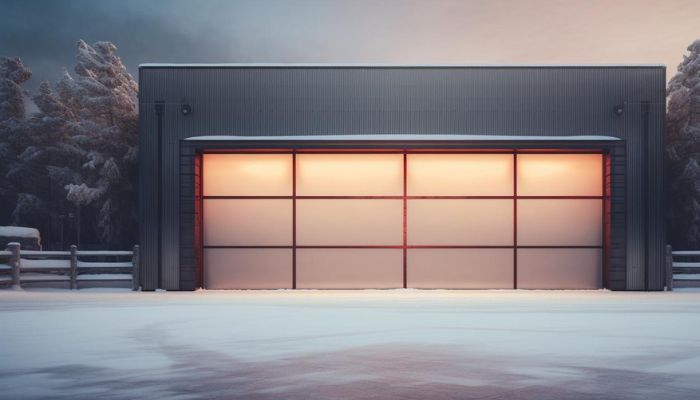
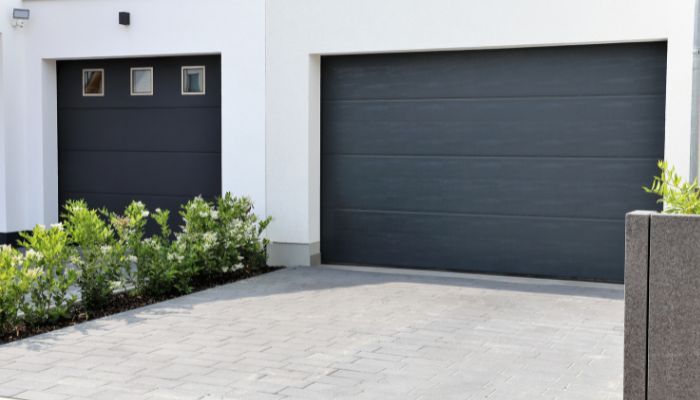


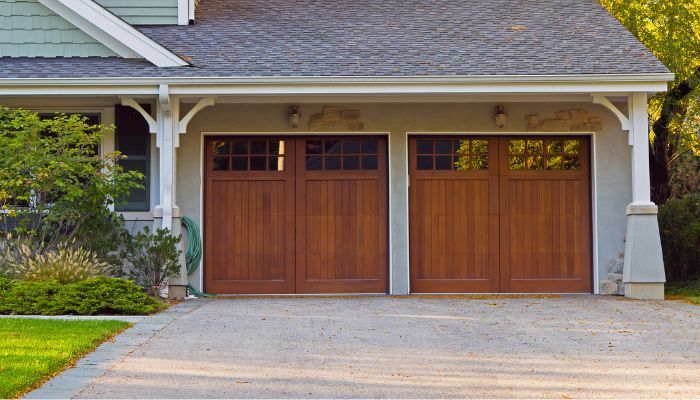
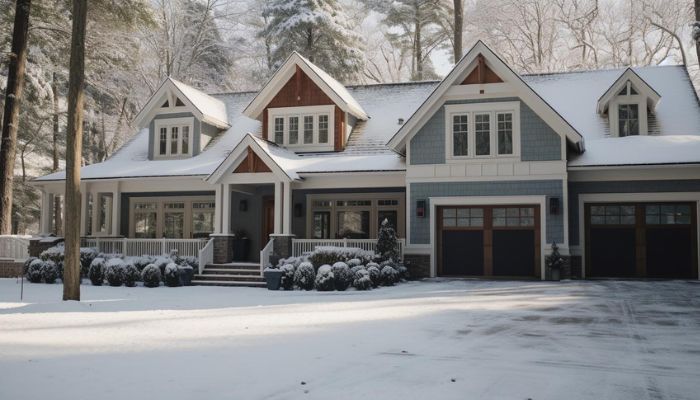

Leave a Reply